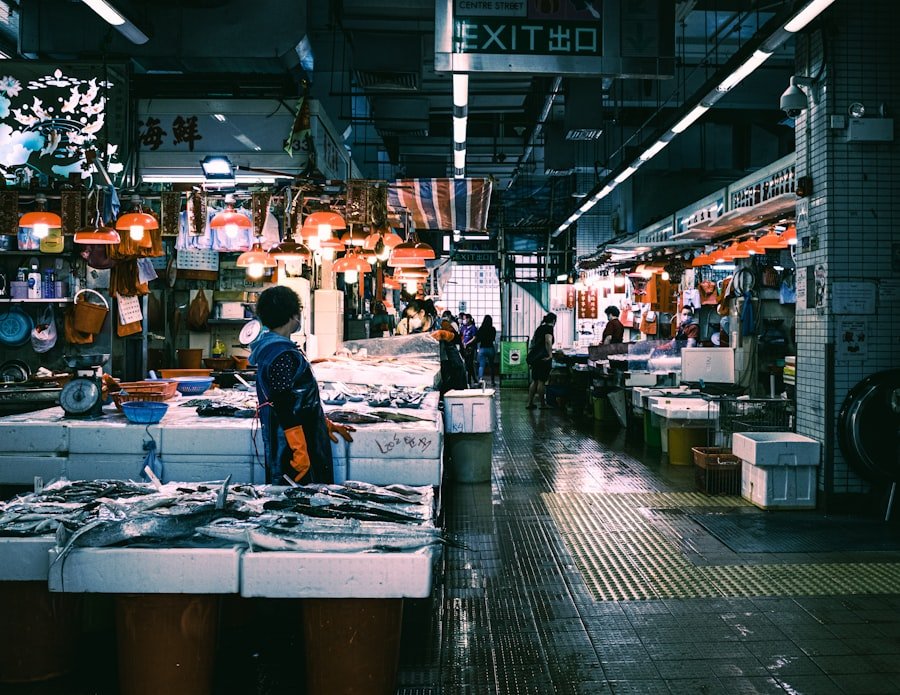Surströmming is a unique food that originates from Sweden. It is a type of fermented herring that is known for its strong smell and acquired taste. Surströmming has a long history and cultural significance in Sweden, and it is often enjoyed during special occasions and festivals. While it may not be for everyone, surströmming is a beloved delicacy in Sweden and has gained some recognition around the world.
摘要
- 瑞典臭鱼是一种腌制鱼类,具有浓郁的气味和味道。
- 瑞典臭鱼在瑞典文化中有着悠久的历史和重要的地位。
- 制作瑞典臭鱼需要将鱼腌制数月,过程繁琐。
- 瑞典臭鱼的味道和气味独特,需要适应和欣赏。
- 瑞典臭鱼富含蛋白质和维生素D,有益健康。
What is Surströmming?
Surströmming is made from Baltic herring that is caught during the springtime. The herring is then fermented in barrels for several months, allowing it to develop its distinct flavor and smell. The fermentation process involves adding just enough salt to prevent the fish from rotting, but not enough to fully preserve it. This results in a unique flavor profile that is both tangy and pungent.
The History and Cultural Background of Surströmming
The origins of surströmming can be traced back to the 16th century in Sweden. It was initially developed as a way to preserve fish during the long winter months when fresh fish was scarce. The fermentation process allowed the herring to be stored for extended periods without spoiling.
Over time, surströmming became more than just a preservation method – it became a cultural tradition. In Sweden, the arrival of the surströmming season is eagerly anticipated, and there are even festivals dedicated to celebrating this unique food. Surströmming parties are common, where friends and family gather to enjoy the delicacy together.
How to Make Surströmming
Making surströmming requires careful preparation and patience. Here is a step-by-step guide on how to make surströmming:
1. Catch fresh Baltic herring during the springtime when they are at their peak.
2. Gut the herring and remove the heads, leaving the fish intact.
3. Layer the herring in a barrel, sprinkling each layer with salt.
4. Place a wooden lid on top of the barrel and weigh it down with stones to create pressure.
5. Allow the herring to ferment for at least six months, but preferably up to a year.
6. Once the fermentation process is complete, remove the herring from the barrel and can it in tins.
7. The tins are then sealed and left to age for a few more months before they are ready to be consumed.
The Taste and Smell of Surströmming
Surströmming is known for its strong smell, which has been described as a combination of rotten eggs, vinegar, and ammonia. The smell is so potent that it is often recommended to open the tin outdoors or under running water to minimize the odor.
In terms of taste, surströmming has a unique tangy and salty flavor. The fermentation process gives the fish a soft and mushy texture, which some people find off-putting. However, those who enjoy surströmming appreciate its complex flavor profile and consider it an acquired taste.
The Nutritional Value of Surströmming

Surströmming is not only a unique delicacy but also a nutritious food option. It is rich in omega-3 fatty acids, which are essential for heart health and brain function. It also contains high levels of protein, vitamins B12 and D, and minerals such as selenium and iodine.
Additionally, the fermentation process of surströmming increases its probiotic content, which promotes a healthy gut microbiome. Probiotics have been linked to improved digestion, immune function, and overall well-being.
Local Consumption and Customs of Surströmming in Sweden
In Sweden, surströmming is traditionally consumed during the late summer and early autumn months. It is often enjoyed with traditional accompaniments such as boiled potatoes, sour cream, chopped onions, and flatbread. Some people also like to eat it on crispbread or with cheese.
There are also customs associated with surströmming consumption. For example, it is customary to open the tin of surströmming outdoors or under running water to minimize the smell. It is also common to eat surströmming in a well-ventilated area or even outside to avoid overwhelming the senses.
The Global Spread and Acceptance of Surströmming
Surströmming has gained some recognition outside of Sweden, but its strong smell and acquired taste have made it a polarizing food. Some people are intrigued by its uniqueness and are willing to give it a try, while others are put off by its pungent odor.
In recent years, there have been attempts to introduce surströmming to other countries and promote it as a delicacy. However, there have been challenges in terms of import regulations and the strong smell of the fish. Despite these obstacles, surströmming has found a niche market among adventurous eaters and those interested in exploring different culinary experiences.
Comparing Surströmming to Other Smelly Foods
Surströmming is often compared to other smelly foods from around the world. One such example is natto from Japan, which is made from fermented soybeans. Natto has a strong smell and slimy texture, similar to surströmming. Both foods are considered an acquired taste and are often enjoyed with rice.
Another smelly food that is often mentioned in the same breath as surströmming is durian fruit from Southeast Asia. Durian is known for its overpowering smell, which has been described as a mix of rotten onions and gym socks. Like surströmming, durian has a devoted following of fans who appreciate its unique flavor.
Surströmming Consumption Restrictions and Precautions
While surströmming is generally safe to consume, there are some precautions that should be taken. The fermentation process can produce gas inside the tin, which can cause the tin to bulge or even explode. It is important to handle the tins with care and check for any signs of damage before opening them.
It is also recommended to open the tin of surströmming outdoors or under running water to minimize the smell. The strong odor can be overwhelming, especially for those who are not accustomed to it.
How to Enjoy Surströmming and Appreciate its Unique Flavor
To properly enjoy surströmming, it is important to approach it with an open mind and a sense of adventure. Here are some tips on how to appreciate its unique flavor:
1. Pair it with traditional accompaniments such as boiled potatoes, sour cream, chopped onions, and flatbread. These flavors complement the tangy and salty taste of surströmming.
2. Take small bites and savor the flavors. The strong taste can be overwhelming if consumed in large quantities.
3. Embrace the smell as part of the experience. While it may be off-putting at first, it is an integral part of surströmming’s identity.
4. Enjoy surströmming in the company of friends and family. Sharing the experience can make it more enjoyable and memorable.
Surströmming is a unique food that holds a special place in Swedish culture. While its strong smell and acquired taste may not appeal to everyone, it is a beloved delicacy in Sweden and has gained some recognition around the world. Surströmming is not only a flavorful and nutritious food option but also a cultural tradition that brings people together. So, if you’re feeling adventurous, why not give surströmming a try and experience this unique Swedish delicacy for yourself?
这篇文章介绍了瑞典挪威语中的12个著名地点,其中包括挪威语中的“stink fish sweden”。此外,您还可以阅读这篇文章,它介绍了挪威语中的10个宇宙术语,以及这篇文章,它介绍了挪威语中的8个沟通技巧词汇。
FAQs
什么是臭鱼?
臭鱼是指一种在瑞典常见的鱼类,也称为“鲇鱼”或“泥鳅鱼”。它们通常生活在淡水中,有时会被用来制作食品。
为什么臭鱼会发出臭味?
臭鱼的臭味来自于其体内的一种化学物质,称为“三甲胺氧化物”。这种化学物质会在鱼死后分解产生,导致鱼体散发出难闻的气味。
臭鱼在瑞典有什么文化意义?
臭鱼在瑞典被视为一种传统食品,尤其在北部地区。每年夏季,人们会举行臭鱼节庆祝这种食品。此外,臭鱼也是瑞典文化中的一个重要元素,出现在文学、电影和音乐中。
臭鱼是否有营养价值?
臭鱼富含蛋白质、维生素和矿物质,是一种营养丰富的食品。然而,由于其强烈的气味和味道,不是所有人都能接受它。
如何制作臭鱼?
制作臭鱼的方法因地区而异,但通常包括将鱼浸泡在盐水中,然后晾干或烟熏。这个过程可能需要几个月的时间,以确保鱼体内的化学物质完全分解。


